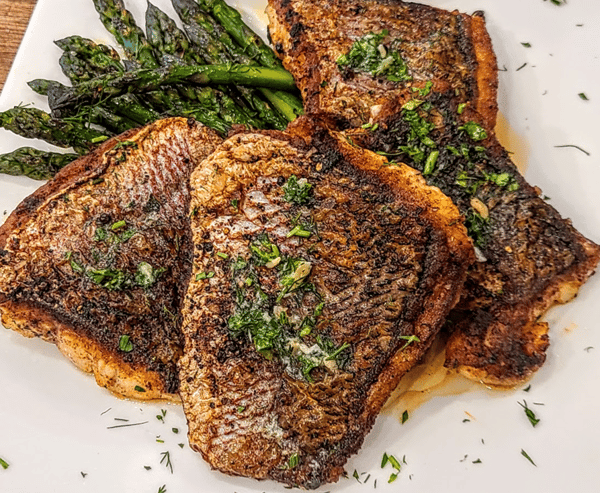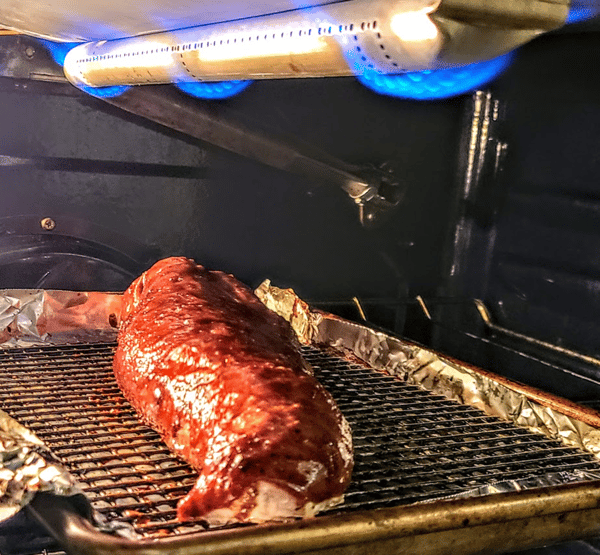I feel broiling is a very underutilized cooking technique for everyday cooking. How often can you say you use your broiler at home? It can be daunting if you do not know how to use it, but when used properly, the broiler setting on your oven is a great way to add a crisp finish to your favorite foods.
Broiling is often either misused or unused, thanks to a bad rap and an unnecessary intimidation factor. I like to think of my broiler like an upside-down grill. By definition, broiling is a method of cooking that directly exposes your food to super high heat but typically only from the top rather than the bottom. This makes it perfect for browning, charring, or quick-cooking foods like salmon. Check out this link for the best broiled salmon recipe! Hopefully you will feel more comfortable and confident using your broiler after learning some basics. As with all cooking, it is about the technique and not so much following a recipe.


Take this braised piece of pork belly below for example. Cooked slow and slow in the oven in a delicious broth makes the texture on the inside tender and moist. For some textural difference and added flavor, I glazed the top and placed it under the broiler for about 10 minutes in order to gain a crispy crunchy top crust. Taking that extra step really elevated the end result.
I love broiling vegetables because it is way quicker than just roasting, but there are some factors to consider such as whether to par-cook or cook from a raw state. Take the asparagus below. All I did was trim the ends, lightly oil and season them and put them right under the broiler raw. But you may also quickly blanch green vegetables before broiling them. Broiling is a great way to refresh leftover veggies, too!
Overall, the closer you place your food to the broiler, the faster the outside will cook. Because food cooks so quickly under the broiling element you really want to make sure you are monitoring your food more often than conventional roasting. Some ovens even suggest leaving the door open to release some of the heat; make sure to check your user manual for their recommendations.
For these chicken tenders above, I marinated them with yogurt, biriyani spice and salt. When placed under the broiler for just 10 minutes, the exterior was perfectly crispy and the interior was exceptionally juicy! Remember, it’s about the technique not a recipe in particular.
Here is how I approach broiling:
- Start on high, once your protein is browning nicely, this is when you want to take the temperature of your protein to gauge how long it should remain under the broiler.
- Pull the proteins out when they are just a few degrees under your desired temperature. This way you can let them rest for a few minutes to stay nice and moist and carryover cook to the proper temperature.
- Have fun with the seasonings and marinades, but remember if your exterior is to wet or oily this can cause flare ups if placed too closely to the heating element.
If you are interested in learning more culinary techniques to enhance your cooking repertoire, join us for Culinary Boot Camp where we go really in-depth to each cooking method to make you a more self-sufficient home cook. It is absolutely my most favorite class we offer at The Chopping Block.
In our Virtual Cook Along: April in Paris Workshop you will learn how to broil French Onion Soup like a pro!
In the meantime, try your hand at broiling for this week’s #TCBcookingchallenge in our private Facebook group. What will you cook in your broiler? I can’t wait to see!
